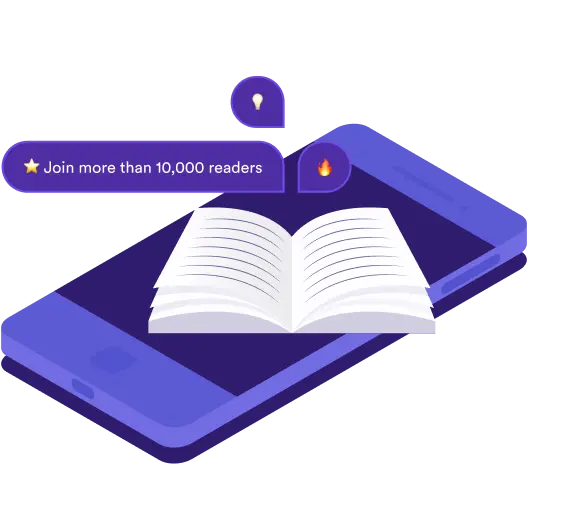Interested in SnackzLAB or SnackzAGENT? 👉🏼 This way!

Enjoying Snackz.ai?
Sign up!
or
I agree to the Privacy Policy and the Terms of Service.
Already have an account?
📩 Check your inbox!
A link to reset your password has been sent to your email address.
Reset Password
No worries! Just enter your email below, and we'll help you reset that password:
Enjoying Snackz.ai?
Sign up!
or
I agree to the Privacy Policy and the Terms of Service.
Already have an account?
📩 Check your inbox!
A link to reset your password has been sent to your email address.
Reset Password
No worries! Just enter your email below, and we'll help you reset that password:
Richard H. Thaler, Cass R Sunstein
Where would you like to order?
Please select your country to proceed with the checkout.
⚡ Free 3min Summary
Nudge - Summary
"Nudge: The Final Edition" is a groundbreaking exploration of how subtle changes in choice architecture can profoundly impact human decision-making. Authors Richard Thaler and Cass Sunstein demonstrate how understanding human psychology and behavioral economics can help design environments that guide people toward better choices while preserving their freedom. The book presents a compelling argument for "libertarian paternalism," showing how thoughtful design of choice environments can help people make decisions that benefit themselves and society without restricting their options.
Key Ideas
The Two-System Brain's Impact on Choice
Our decision-making is governed by two distinct systems: the quick, intuitive Automatic System and the deliberate, analytical Reflective System. Understanding this dual nature explains why we often make choices that conflict with our best interests and how we can design environments that work with, rather than against, these natural tendencies.
The Power of Default Options
The way choices are presented dramatically influences decisions. Default options act as powerful nudges because people tend to stick with pre-selected choices. This insight has profound implications for everything from organ donation programs to retirement savings plans, showing how thoughtful defaults can promote beneficial outcomes while maintaining freedom of choice.
Smart Disclosure Revolution
Modern technology enables the transformation of complex information into easily digestible formats. Through standardized, machine-readable data and user-friendly interfaces, people can better understand their options and make more informed decisions, particularly in areas like finance, healthcare, and energy consumption.
FAQ's
Nudging is transparent and preserves freedom of choice, whereas manipulation seeks to deceive or coerce. The book emphasizes that effective nudges should be visible and easily avoidable if people choose to do so, maintaining individual autonomy while gently guiding toward better decisions.
Yes, when properly implemented. The book demonstrates how thoughtful choice architecture has successfully addressed issues ranging from organ donation shortages to environmental conservation, though it works best as part of a comprehensive approach rather than a standalone solution.
No, the principles of nudging apply to everyone. While policymakers can implement large-scale nudges, individuals can use these insights to improve personal decision-making, design better business strategies, or enhance family financial planning.
💡 Full 15min Summary
The human brain operates using two distinct cognitive systems: the Automatic System and the Reflective System. The Automatic System is fast, intuitive, and often unconscious. It's responsible for our instinctive reactions, such as ducking when a ball is thrown at us unexpectedly or smiling when we see a cute puppy. This system is associated with the oldest parts of the brain, the parts we share with lizards and puppies.
On the other hand, the Reflective System is slow, deliberate, and self-aware. We use this system when we are faced with complex tasks that require conscious thought, such as calculating a difficult math problem or deciding which route to take for a trip to an unfamiliar place.
These two systems help explain the paradox of human intelligence, where we can be ingenious in some tasks and clueless in others. For instance, accomplished athletes can rely on their Automatic Systems to perform complex tasks with amazing accuracy and exceptional speed, thanks to countless hours of practice. However, they might struggle with simple tasks that require the Reflective System, such as calculating a difficult math problem.
A story that illustrates the interaction between these two systems involves a nine-year-old boy named Declan, who was unable to resist toy stores. His Automatic System would urge him to go inside and buy something, even though his Reflective System knew he had enough toys. This story highlights how our Automatic System can sometimes override our Reflective System, leading us to make decisions that may not be in our best interest. This is where the concept of "nudging" becomes particularly relevant. "Nudging" is a concept in behavioral science that involves subtly guiding individuals towards beneficial decisions without restricting their freedom of choice. It is designed to take advantage of the Automatic System's tendency to respond to environmental cues and guide it towards better choices.
Enjoyed the sneak peak? Get the full summary!
Let's find the best book for you!
AdvertisementSection.TitleNew
AdvertisementSection.SubTitleNew

Get the books directly into your inbox!
✅ New Release
✅ Book Recommendation
✅ Book Summaries
Copyright 2023-2025. All rights reserved.